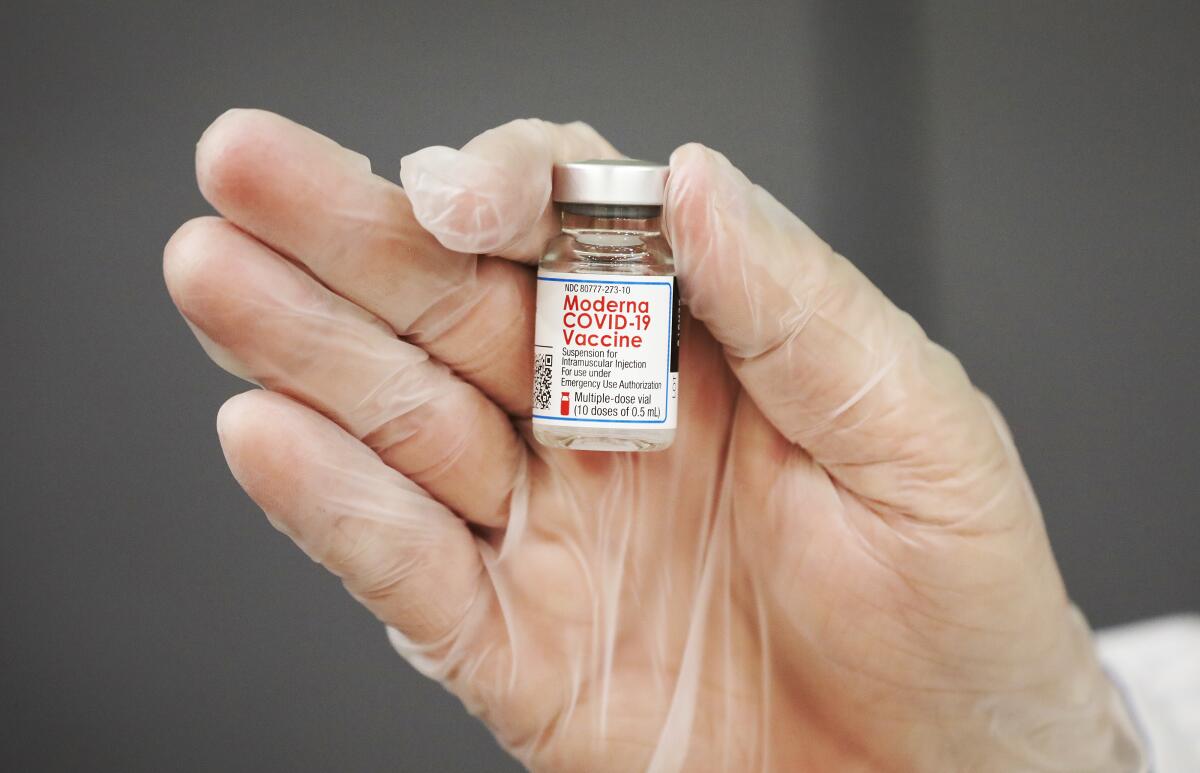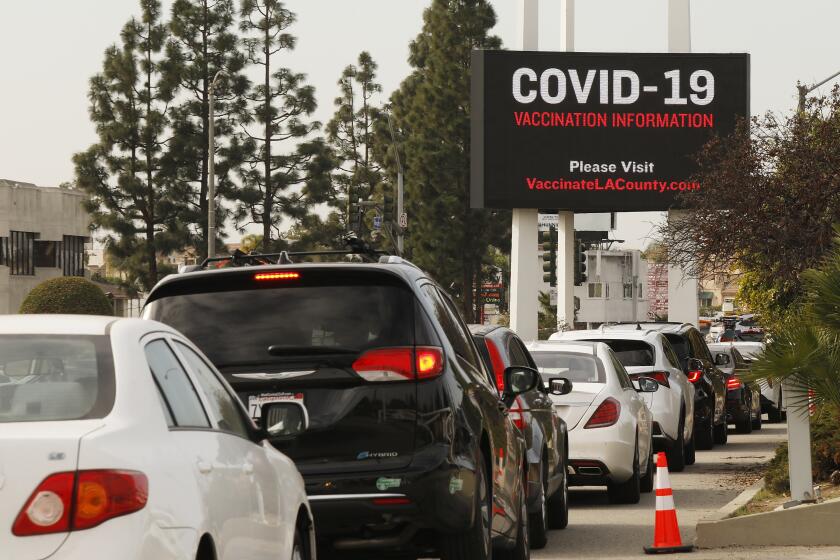How to get a COVID-19 vaccine in Santa Barbara County

- Share via
Santa Barbara County residents 65 and older, those who work in healthcare and hold certain other jobs, and those with high-risk medical conditions are currently eligible to be vaccinated against COVID-19. But how you sign-up varies, depending on how you are eligible. Vaccine supplies also are limited right now, so there may be fewer available appointments, making securing a slot challenging.
“Patience is key,” said Jackie Ruiz, public information officer for the county Public Health Department.
Before you start trying to make your appointment, it’s important to understand the differences among the various sites and systems in your county.
In Santa Barbara County, the Public Health Department operates large vaccination sites in Santa Barbara, Lompoc and Santa Maria. But only about 20% of the county’s vaccine allocation goes to those sites, Ruiz said. Much more vaccine goes to hospitals, pharmacies, nursing homes and other settings that are vaccinating people in the highest-priority categories, such as healthcare workers and older people in long-term-care facilities.
The county also has an outreach effort with community partners to vaccinate Latino, Black, Indigenous and other underserved communities, Ruiz said.
In addition, pharmacies such as Vons and Ralphs are administering vaccines. CVS has appointments in some places in California — but its vaccine allocation comes from the federal government and is not part of the county’s system.
It’s a lot to navigate, so this guide for Santa Barbara County will break it down into steps.
Note that more Californians will become eligible later in March. And, so far, it’s unclear whether California’s new arrangement with Blue Shield will alter how people are vaccinated around the state. For information on other Southern California counties, go here.
Eligibility
Depending on which eligibility criteria you meet, you will need to register for an appointment in a specific way, Ruiz said. Under “Links to Vaccination Appointments for Eligible Populations” on the county public health website, click on the green box for your sector.
People 65 and older, for example, can register at various pharmacies, hospitals or with their primary care provider. People who work in food and agriculture, such as grocery store employees or farmworkers, will be vaccinated through county public health sites, some pharmacies or a primary care provider. People with high-risk medical conditions or disabilities can register at the listed pharmacies and health centers. Educators will be notified by their employers. Child-care providers can enter a lottery system; call (805) 925-7071 or email reception@crrsbc.org for more information.
Making your first appointment
Once you’re in the right section, you’ll see a list of locations with available appointments. You may have to click through several over the course of a few days or weeks before you secure an appointment.
Ruiz said the county would soon transition to California’s MyTurn scheduling system, so it wouldn’t hurt to familiarize yourself with that now as well.
You can also sign up for email updates about vaccines from the county.
Getting your first shot
Once you’ve secured an appointment and it’s time to get your shot, be sure to carefully read any instructions provided (on the sign-up page or in a confirmation email) when you signed up. In general, you’ll need to bring with you some proof of eligibility. Ruiz said that can be many things, including a photo ID, mail with your address on it, or a library card. For people with high-risk conditions, you’ll be asked to sign a self-attestation affirming that you meet one of the eligibility requirements.
Definitely wear a mask; the Centers for Disease Control and Prevention now recommends doubling up for a better fit with some styles of masks.
Arrive for your appointment about 15 minutes early. At county-run sites, someone will greet you when you drive in, verify your appointment and direct you where to park. Then you’ll get in line and check in. You’ll answer a few screening questions and then head to the vaccination area.
If you are unable to leave your car, someone will come to you to check you in and give you a shot.
Try smiling when you get your shot — research has shown that it reduces needle pain.
Next, you’ll head to a waiting area for a brief observation period. This is just in case of very rare allergic reactions. You’ll get a CDC vaccination card that indicates which vaccine you’ve received — Pfizer-BioNTech, Moderna or Johnson & Johnson — and when you are due for your second dose. No second dose is needed for the Johnson & Johnson vaccine. You’ll get a sticker, too, Ruiz said — lucky you! — and be on your way.
Pharmacies and other sites may have different procedures.
The COVID-19 vaccines, though safe and effective, are not a license to abandon all infection-prevention protocols, health officials say.
Getting your second dose
At county-run vaccination sites, you can make your appointment for a second dose right after you receive your first. Each site has QR codes posted, Ruiz said, which you can scan with a smartphone. That will allow you to schedule your second appointment then and there using your phone.
If you don’t have a smartphone or would prefer to skip the QR code, you can call the county to schedule your second dose. Call 211 from within Santa Barbara County and follow the prompts. Representatives speak English and Spanish and can get help in other languages if needed.
Ruiz says people who are vaccinated at a pharmacy, workplace or other non-county setting should work within that system to get their second dose.
The timing of your second dose depends on which vaccine you received. For Pfizer, three weeks after the first is the recommended interval. For Moderna, it’s four weeks. If you’re a day or two early or a couple of weeks delayed, that’s OK, according to the CDC.
The process for getting a COVID-19 vaccine varies county to county.
More to Read
Sign up for Essential California
The most important California stories and recommendations in your inbox every morning.
You may occasionally receive promotional content from the Los Angeles Times.







![Vista, California-Apri 2, 2025-Hours after undergoing dental surgery a 9-year-old girl was found unresponsive in her home, officials are investigating what caused her death. On March 18, Silvanna Moreno was placed under anesthesia for a dental surgery at Dreamtime Dentistry, a dental facility that "strive[s] to be the premier office for sedation dentistry in Vitsa, CA. (Google Maps)](https://ca-times.brightspotcdn.com/dims4/default/07a58b2/2147483647/strip/true/crop/2016x1344+29+0/resize/840x560!/quality/75/?url=https%3A%2F%2Fcalifornia-times-brightspot.s3.amazonaws.com%2F78%2Ffd%2F9bbf9b62489fa209f9c67df2e472%2Fla-me-dreamtime-dentist-01.jpg)







